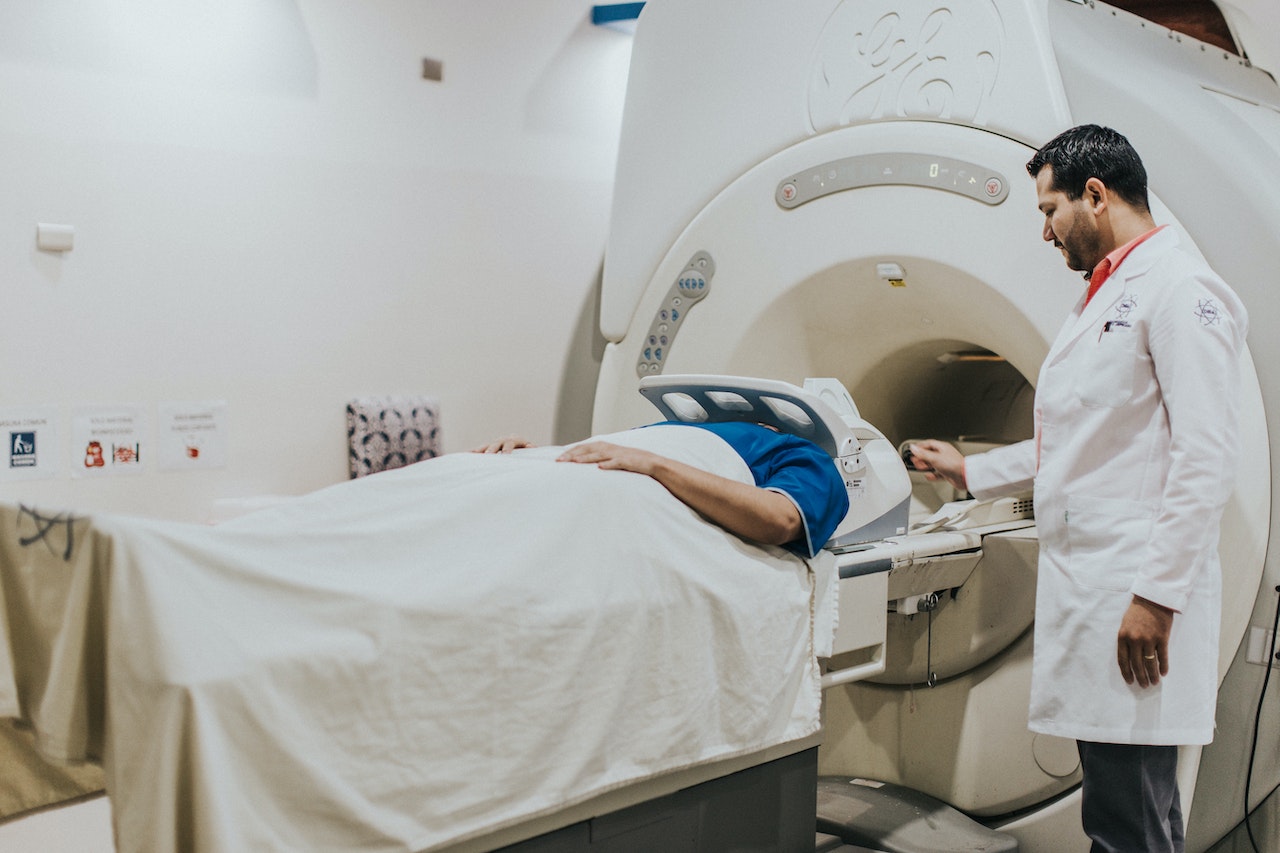Medical imaging jobs offer an exciting and rewarding career path for individuals interested in the healthcare industry. Medical imaging has become an integral part of patient care and diagnosis with advances in technology. As the demand for skilled professionals in this field continues to grow, it is important to understand the different types of medical imaging careers available.
In this article, we will explore the top 5 medical imaging jobs that are expected to continue to be in high demand. Whether you are just starting your career or looking for a change, these positions offer opportunities for growth and development within a rapidly evolving industry. From radiologic technologists to ultrasound technicians, we will provide insight into each job's responsibilities, required education and certifications, as well as potential salary ranges.

Overview of Medical Imaging Jobs
Radiology and diagnostic imaging jobs are among the most in-demand medical professions today. These fields of work involve using various imaging procedures to capture pictures of a patient's internal organs, tissues, and bones.
Analyzing these images helps doctors diagnose illnesses or injuries. Additionally, diagnostic imaging procedures are not invasive so that many more medical facilities can offer them. Besides working in hospitals, many imaging centers around the country provide employment.
The top five medical imaging jobs projected for 2024 include radiologic technologists, diagnostic medical sonographers, magnetic resonance imaging (MRI) technologists, nuclear medicine technologists, and cardiovascular technologists.
- Diagnostic medical sonographers use ultrasound technology to produce images of a patient's inner workings.
- MRI technicians utilize powerful magnets and radio waves to create detailed pictures of structures within the body.
- Radiologic technicians operate X-ray machines and other diagnostic equipment while taking patient images.
- Nuclear medicine technicians administer radioactive drugs to patients before capturing images that help identify diseases like cancer or heart disease.
- Cardiovascular technicians monitor cardiac functions during procedures such as stress testing or echocardiography.
Overall, job prospects in this field are promising as advancements in technology continue to expand how medical professionals diagnose ailments through non-invasive methods. By choosing a specialty with excellent growth potential and enrolling in the appropriate educational programs, you will have the prospect of a high-paying career.
Diagnostic Medical Sonographer
Medical sonographers are healthcare professionals who use high-frequency sound waves to create images of internal organs and tissues in the human body. They work with various patients, including expectant mothers, cancer patients, and those with heart disease. The images produced by sonography help doctors diagnose and treat medical conditions.

To become a medical sonographer, one must complete an accredited program that typically takes 2-4 years. Certification is also necessary through organizations such as the American Registry for Diagnostic Medical Sonography (ARDMS) or Cardiovascular Credentialing International (CCI).
According to the Bureau of Labor Statistics (BLS), employment opportunities for diagnostic medical sonographers are expected to grow 14% by 2028 due to an aging population and advances in technology. The median annual salary for this profession was $74,320 as of May 2019.
Magnetic Resonance Imaging (MRI) Technologist
One of the top medical imaging jobs for 2024 is a magnetic resonance imaging (MRI) technologist. These professionals use imaging equipment to create detailed pictures of a patient's organs and tissues, helping doctors diagnose and treat various conditions. MRI technologists must have extensive knowledge of anatomy, physiology, and physics to operate the complex machinery properly.

In addition to operating the equipment, MRI technologists are responsible for ensuring patient safety during the procedure. Before administering the test, they must carefully screen patients for any potential risks or contraindications. MRI technologists should also have strong communication skills as they often need to explain the procedure to patients and answer any questions they may have.
Individuals typically need an associate’s degree in radiologic technology or a related field to become an MRI technologist. Many states also require licensure or certification in order to practice as an MRI technologist. Due to advances in medical technology and an aging population requiring more diagnostic testing, job prospects for magnetic resonance imaging technologists are expected to grow much faster than average over the next decade.
Radiologic Technologist
Another top imaging job in 2024 is expected to be a radiologic technologist. These healthcare professionals use specialized equipment to produce images of a patient’s internal organs, bones, and tissues. They work closely with radiologists, physicians, and other healthcare professionals to provide accurate diagnostic tests for patients.
To become a radiologic technologist, one must complete an accredited educational program and obtain certification from the American Registry of Radiologic Technologists (ARRT). The job outlook for radiologic technologists is positive, with an expected 9% job growth rate between 2018 and 2028. This growth is due to an aging population that requires more medical imaging services.
Radiology professionals must have strong communication skills as they often explain procedures to patients and calm their fears during testing. They also need good critical thinking skills to analyze images accurately and identify any abnormalities or issues that require further examination by a physician or radiologist. Overall, it’s clear that the role of a radiologic technologist will continue to be in high demand in the coming years due to its importance in providing crucial diagnostic information for patients.
Nuclear Medicine Technologist
Nuclear medicine technologists are professionals who use radioactive materials to diagnose and treat medical conditions. They work with doctors to administer radiopharmaceuticals, which are drugs that contain small amounts of radioactive material. Patients inject, inhale, or swallow these drugs before an imaging test like a PET scan is conducted. The nuclear medicine technologist then uses specialized equipment to capture images of the patient's body and analyze them for signs of disease.

To become a nuclear medicine technologist, students must complete an accredited nuclear medicine technology program and obtain certification from a recognized agency like the American Registry of Radiologic Technologists (ARRT).
According to the US Bureau of Labor Statistics, employment opportunities for these technicians are expected to grow by 7% between 2019 and 2029.
This growth will be driven by aging baby boomers who require more medical services as they age.
Nuclear medicine technologists can expect to earn a median salary of $77,950 per year, according to BLS data from May 2020.
Cardiovascular Technologist
Cardiovascular technologists play a crucial role in diagnosing and treating heart-related diseases and disorders. They work with specialized equipment, such as echocardiography machines, to perform non-invasive tests on patients' hearts. These tests help physicians identify issues like blockages or abnormalities in the heart's structure and function.
The demand for cardiovascular technologists is expected to grow significantly in the coming years due to an aging population and an increase in chronic conditions like obesity and diabetes. According to the Bureau of Labor Statistics, employment of cardiovascular technologists is projected to grow 7% from 2019-2029, faster than the average for all occupations.
To become a cardiovascular technologist, individuals typically need an associate's degree in cardiovascular technology or a related field. Some states also require certification or licensure. The median annual wage for cardiovascular technologists was $59,400 in May 2019, making it a lucrative career option for those interested in medical imaging.
A Rapidly Expanding Career Path
In conclusion, the field of medical imaging is rapidly expanding, and there are many promising career opportunities available for those who are interested in pursuing a career in this field. We have summarized the top 5 paying medical imaging jobs, each with impressive job growth potential.
Whichever specialty you choose to pursue, each requires specialized training and education, but they all offer rewarding careers with competitive salaries. As technology continues to advance, there will be an increasing demand for skilled professionals who can operate and maintain complex imaging equipment.
Overall, if you have a passion for healthcare and technology, a career in the medical imaging industry may be an excellent choice for you. Many positions only require a two-year degree. With growing demand and advancements in technology driving the industry forward, it's an exciting time to pursue a career in this field.